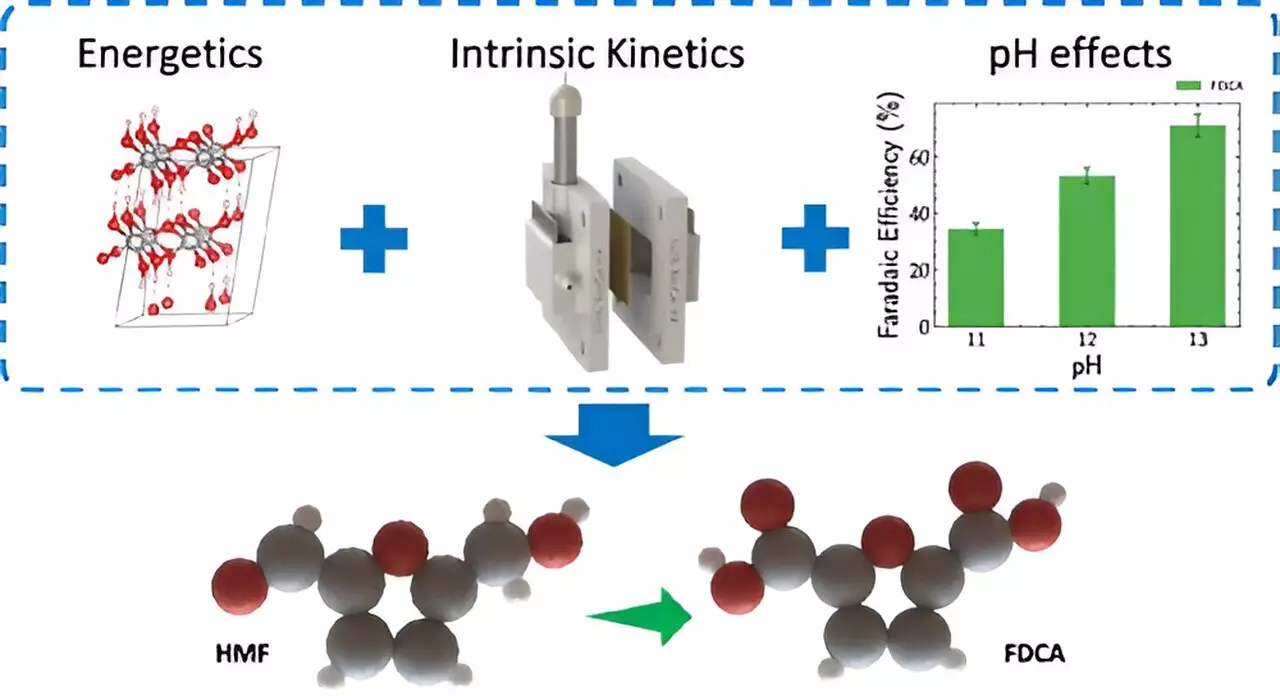Recent advancements in electrochemistry have paved the way for a transformative method that aims to make chemical production more sustainable and energy-efficient. A dedicated team from Lawrence Livermore National Laboratory (LLNL), alongside various collaborators, has developed a novel process utilizing thin film nickel anodes that not only streamlines chemical reactions but significantly reduces environmental impact. This innovative approach relies on the specific properties of thin films, which allow researchers to isolate and examine the fundamental aspects of catalysis without the interference often caused by irregular surface variations.
Thin films, as emphasized by LLNL postdoctoral researcher Aditya Prajapati, play a crucial role in the study of electrochemical reactions. Their uniform surfaces eliminate random discrepancies associated with thicker or more porous materials, thus providing a reliable platform for analysis. This clarity of focus facilitates a deeper comprehension of how catalysts function, which is essential for imbuing traditional chemical processes with greater efficiency. Correspondingly, Principal Investigator Christopher Hahn remarked on the significance of this research in refining our grasp of chemical interactions, leading us to developing optimized methods for production that minimize energy consumption.
The current generation of electrolyzers, which convert electrical energy into high-energy-density molecules, face substantial hurdles in energy efficiency—primarily due to the oxygen evolution reactions taking place at the anode. The groundbreaking research undertaken by the LLNL team proposes replacing these reactions with biomass oxidation. This shift could result in more than a 50% reduction in energy use, showcasing a dual achievement of improved efficiency and sustainability through biomass conversion processes. This innovative method involves the transformation of 5-Hydroxymethylfurfural (HMF), a biomass derivative, into 2,5-Furandicarboxylic acid (FDCA), an essential component in the production of sustainable plastics, such as polyethylene furanoate (PEF).
The environmentally conscious implications of this method are particularly noteworthy. By utilizing biomass as a starting material, the approach not only decreases reliance on traditional petroleum sources but also limits carbon emissions derived from chemical processes. Traditional methods often necessitate high temperatures and generate hazardous waste; however, this electrochemical technique offers a cleaner alternative. Nitish Govindarajan, another key figure in this research, points out the method’s potential for achieving a zero-carbon footprint through the integration of renewable energy sources.
By diverting attention towards renewable feedstocks, this innovative electrochemical process aligns seamlessly with principles of a circular economy. As industries shift their focus toward sustainable practices and materials, the deployment of this technology could represent a significant step forward. The potential for lower energy consumption and the promotion of renewable resources highlight a pathway to not only sustainable chemical production but a more responsible relationship with the planet’s finite resources.
The LLNL team’s breakthrough in electrochemical methods signifies more than a technical enhancement; it symbolizes a robust paradigm shift in how the chemical industry can evolve towards sustainability. With the combined efforts of dedicated researchers such as Wenyu Sun, Jeremy Feaster, Sneha Akhade, and international collaborators from Université de Montréal and the University of Bonn, the vision for a cleaner, energy-efficient future in chemical production is increasingly attainable.

